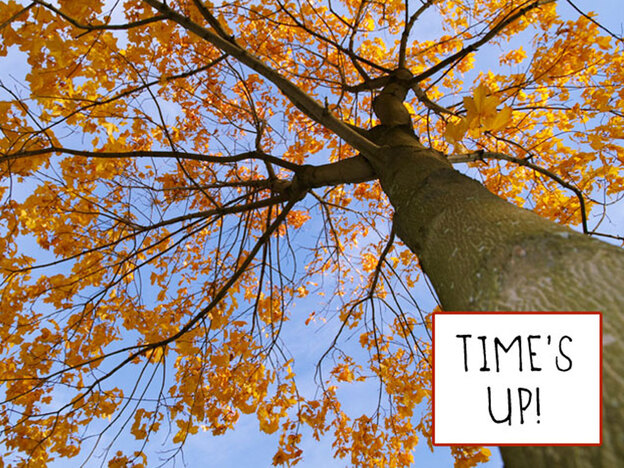Why Do Leaves Really Fall Off Trees?
.We call this season the “fall” because all around us right now (if you live near leaf-dropping trees in a temporal zone), leaves are turning yellow and looking a little dry and crusty. So when a stiff breeze comes along, those leaves seem to “fall” off, thus justifying the name “fall.”
Sounds reasonable, no?
But the truth is much more interesting.
According to Peter Raven, president of the Missouri Botanical Garden and a renowned botanist, the wind doesn’t gently pull leaves off trees. Trees are more proactive than that. They throw their leaves off. Instead of calling this season “The Fall,” if trees could talk they’d call this the “Get Off Me” season.
Here’s why.
Around this time of year in the Northern Hemisphere, as the days grow shorter and colder, those changes trigger a hormone in leaf-dropping trees that sends a chemical message to every leaf that says, in essence, “Time to go! Let’s part company!”
Once the message is received, says Raven, little cells appear at the place where the leaf stem meets the branch. They are called “abscission” cells. They have the same root as the word scissors, meaning they are designed, like scissors, to make a cut.
And within a few days or weeks, every leaf on these deciduous trees develops a thin bumpy line of cells that push the leaf, bit by bit, away from the stem. You can’t see this without a microscope, but if you looked through one, you’d see those scissors cells lined right up.
That’s where the tree gives each leaf a push, leaving it increasingly dangling. “So with that very slender connection, they’re sort of ready to be kicked off,” says Raven, and then a breeze comes along and finishes the job.
So the truth is, the wind isn’t making the leaves fall. It’s the tree.
The tree is deeply programmed by eons of evolution to insist that the leaves drop away. Why? Why not let the leaves stick around? Why drop?
Raven explains that leaves are basically the kitchen staff of a tree. During the spring, summer and early fall they make the food that helps the tree grow and thrive and reproduce. When the days get short and cold, food production slows down, giving the tree an option: It can keep the kitchen staff or it can let it go.
If trees kept their leaves permanently they wouldn’t have to grow new ones, but leaves are not the brightest of bulbs (sorry!). Every so often, when the winter weather has a break and the days turn warm, Raven says leaves will start photosynthesizing. “They get some water up and they start operating and making food and then it freezes again.”
When the cold snap’s back on, the leaves will be caught with water in their veins, freeze and die. So instead of a food staff that’s resting, the tree is stuck with a food staff that’s dead. And when spring comes, the permanent help will be no help. The tree will die.
That’s why every fall, deciduous trees in many parts of North America get rid of their leaves and grow new ones in the spring. It’s safer that way.
So for leaves, falling in the fall isn’t optional. The trees are shoving them off.
iStockphoto.com
Join over 320,000 readers. Get a free weekly update via email here.
Related posts:
New Neuroscience Reveals 4 Rituals That Will Make You Happy
New Harvard Research Reveals A Fun Way To Be More Successful
How To Get People To Like You: 7 Ways From An FBI Behavior Expert





